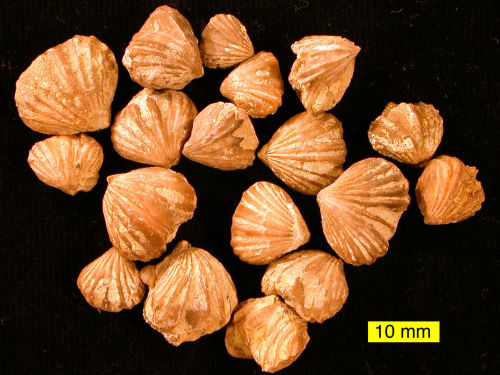Source


Source
See more bridges like this from around the world
Follow Ultrafacts for more facts
More Posts from Llamaslikesciencetoo and Others



This new procedure is making it a little bit easier to deal with cancer treatment
Cancer patients who are undergoing chemo no longer have to suffer hair loss. A new cooling treatment, called the Dignicap, is placed on the head during chemo and protects the hair follicle by reducing blood flow. The process can be expensive, sometimes up to $600, but so far it’s been very effective and has helped cancer patients feel a little more comfortable throughout their treatment.
You know you grew up on Steve Irwin when you see a photo of a crocodile and think, “Wow. Just beautiful.”
What Life On A New Planet Will Mean





World’s largest concentrated solar plant switches on in the Sahara
Morocco has switched on what will be the world’s largest concentrated solar power plant. The new site near the city of Ouarzazate could produce enough energy to power over one million homes by 2018 and reduce carbon emissions by an estimated 760,000 tons per year, according to the Climate Investment Funds (CIF) finance group.
As His Majesty Mohammed VI of Morocco pressed a button on 4 February 2016, the first phase of the three-part project was set in motion.
The solar plant, called the Noor complex, uses concentrating solar power (CSP) which is more expensive to install than the widely used photovoltaic panels, but unlike them, enables the storage of energy for nights and cloudy days.
Mirrors focus the sun’s light and heat up a liquid, which, when mixed with water, reaches around 400 degree Celsius. The steam produced from this process drives a turbine and generates electrical power.
A cylinder full of salt is melted by the warmth from the mirrors during the day, and stays hot enough at night to provide up to three hours of power, according to World Bank, who partially financed construction of the plant through a $97 million loan from the Clean Technology Fund.
“The returns on this investment will be significant for the country and its people, by enhancing energy security, creating a cleaner environment, and encouraging new industries and job creation,” said Marie Francoise Marie-Nelly, World Bank Country Director for the Maghreb.
read more here
don’t 👏🏼 go 👏🏼 to 👏🏼 the 👏🏼 disco 👏🏼 if 👏🏼 you 👏🏼 won’t 👏🏼 panic 👏🏼

Come and take a “bite” out of nature & science, attending Explorers Society Members Event. #northmuseum #stemsisters #sharks (at North Museum of Nature & Science)

The Ocean Turnover
These are brachiopods, a type of filter-feeding organism that first evolved in the Cambrian era oceans. Although they look a lot like modern-day bivalves (clams), they are a very different organism, found in a totally different phylum. They can readily be distinguished by their shell shapes; brachiopods have sort of a “kink” in their shells whereas bivalves have more rounded shapes. Clams are molluscs, while brachiopods come from the phylum brachiopoda. These two types of filter-feeding organisms have an interesting interplay in the geologic record; if you pick up a limestone from the Paleozoic it is likely to be dominated by brachiopods, while Mesozoic and Cenozoic bivalve shells dominate limestones.
Keep reading

One million full length movies are stored in this vial using DNA as storage media. We’re through the looking glass people. The future is now.



Red-lined bubble snail (Bullina lineata)
The red-lined bubble snail, is a species of sea snail, a marine gastropod mollusc in the family Bullinidae. This snail has a milky-white mantle with iridescent blue edges. There are small black eyes on the head between the head shield processes. The shell has a white background with horizontally spiraling red brown bands which are crossed by vertical bands in the same color. The length is 15 to 25 mm. This species occurs in the sublittoral zone of the Indo-Pacific from Japan to Australia and New Zealand.
photo credits: seaslugsofhawaii, Sylke Rohrlach, Richard Ling
-
 miss-chanandlershalamadingdong reblogged this · 9 months ago
miss-chanandlershalamadingdong reblogged this · 9 months ago -
 miss-chanandlershalamadingdong liked this · 9 months ago
miss-chanandlershalamadingdong liked this · 9 months ago -
 akirakan reblogged this · 9 months ago
akirakan reblogged this · 9 months ago -
 heckcareoxytwit reblogged this · 9 months ago
heckcareoxytwit reblogged this · 9 months ago -
 mintyswriting liked this · 9 months ago
mintyswriting liked this · 9 months ago -
 ohfugecannada liked this · 9 months ago
ohfugecannada liked this · 9 months ago -
 heckcareoxytwit reblogged this · 9 months ago
heckcareoxytwit reblogged this · 9 months ago -
 failedbimboinstem liked this · 2 years ago
failedbimboinstem liked this · 2 years ago -
 kaiyumidiary liked this · 2 years ago
kaiyumidiary liked this · 2 years ago -
 deviledeggi reblogged this · 2 years ago
deviledeggi reblogged this · 2 years ago -
 weskerubcs reblogged this · 3 years ago
weskerubcs reblogged this · 3 years ago -
 weskerubcs liked this · 3 years ago
weskerubcs liked this · 3 years ago -
 tittysoda liked this · 3 years ago
tittysoda liked this · 3 years ago -
 irishwren reblogged this · 3 years ago
irishwren reblogged this · 3 years ago -
 irishwren liked this · 3 years ago
irishwren liked this · 3 years ago -
 gabrielasherbenaum reblogged this · 3 years ago
gabrielasherbenaum reblogged this · 3 years ago -
 gabrielasherbenaum liked this · 3 years ago
gabrielasherbenaum liked this · 3 years ago -
 geekingout87 liked this · 3 years ago
geekingout87 liked this · 3 years ago -
 wolfofromania liked this · 4 years ago
wolfofromania liked this · 4 years ago -
 valleyofdeaddandelions7 reblogged this · 4 years ago
valleyofdeaddandelions7 reblogged this · 4 years ago -
 valleyofdeaddandelions7 liked this · 4 years ago
valleyofdeaddandelions7 liked this · 4 years ago -
 lauraatulsa reblogged this · 4 years ago
lauraatulsa reblogged this · 4 years ago -
 lauraatulsa liked this · 4 years ago
lauraatulsa liked this · 4 years ago -
 frustratedlivingbeing liked this · 4 years ago
frustratedlivingbeing liked this · 4 years ago -
 blkdaze liked this · 4 years ago
blkdaze liked this · 4 years ago -
 stravacious liked this · 4 years ago
stravacious liked this · 4 years ago -
 oxymitch-archive reblogged this · 4 years ago
oxymitch-archive reblogged this · 4 years ago -
 itsallgoingtopot reblogged this · 4 years ago
itsallgoingtopot reblogged this · 4 years ago -
 itsallgoingtopot liked this · 4 years ago
itsallgoingtopot liked this · 4 years ago -
 eggs-and-soap liked this · 4 years ago
eggs-and-soap liked this · 4 years ago -
 mickeyjmir liked this · 4 years ago
mickeyjmir liked this · 4 years ago -
 dxilph reblogged this · 4 years ago
dxilph reblogged this · 4 years ago -
 dxilph liked this · 4 years ago
dxilph liked this · 4 years ago -
 evilsteve liked this · 4 years ago
evilsteve liked this · 4 years ago -
 writerbytrade reblogged this · 4 years ago
writerbytrade reblogged this · 4 years ago -
 yukiko133 reblogged this · 4 years ago
yukiko133 reblogged this · 4 years ago -
 oc45 liked this · 4 years ago
oc45 liked this · 4 years ago -
 iamsancho liked this · 4 years ago
iamsancho liked this · 4 years ago -
 traveler733 liked this · 4 years ago
traveler733 liked this · 4 years ago -
 prince-toffee reblogged this · 4 years ago
prince-toffee reblogged this · 4 years ago -
 prince-toffee liked this · 4 years ago
prince-toffee liked this · 4 years ago -
 maridulce-doodles liked this · 4 years ago
maridulce-doodles liked this · 4 years ago
Mainly interested in ecology, but also the entirety of science.
179 posts